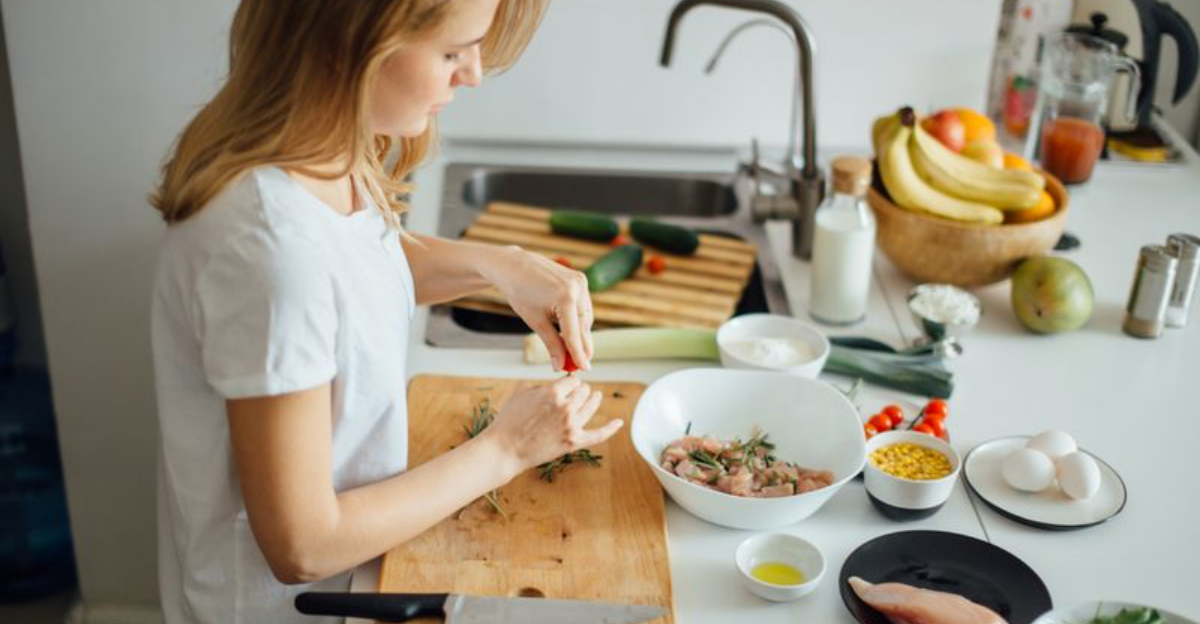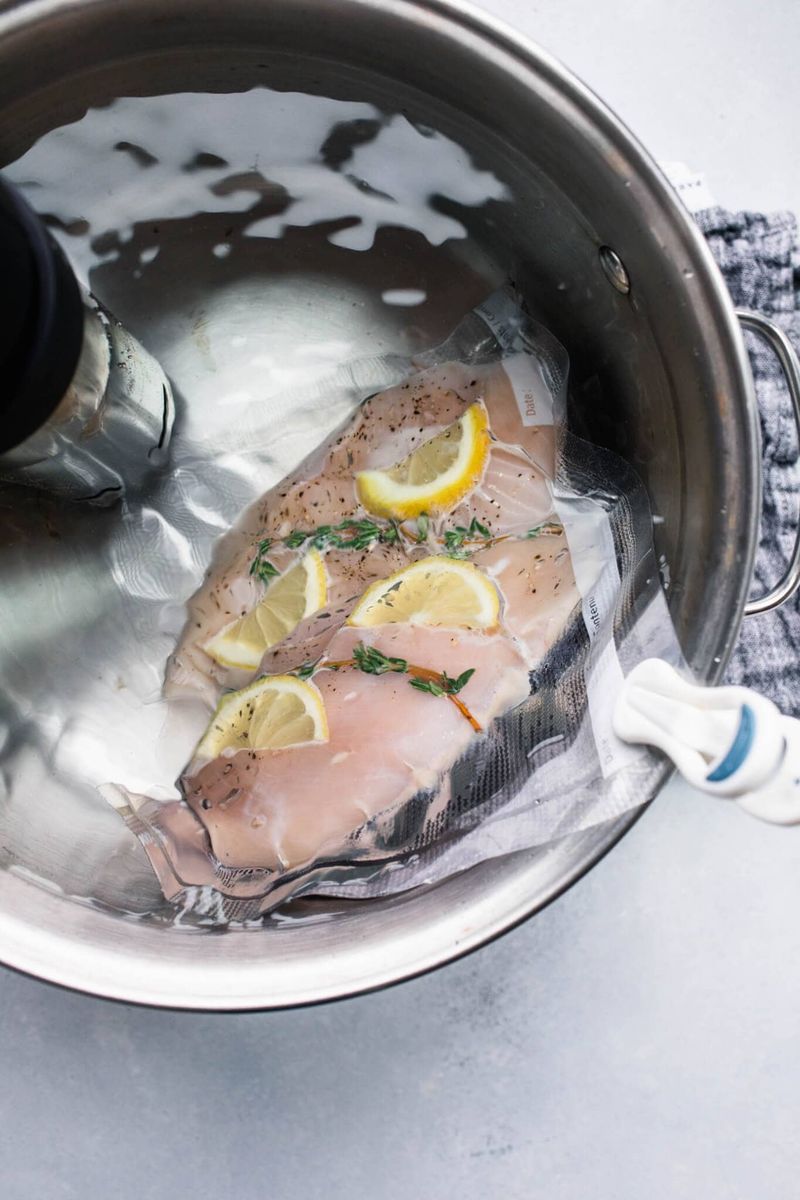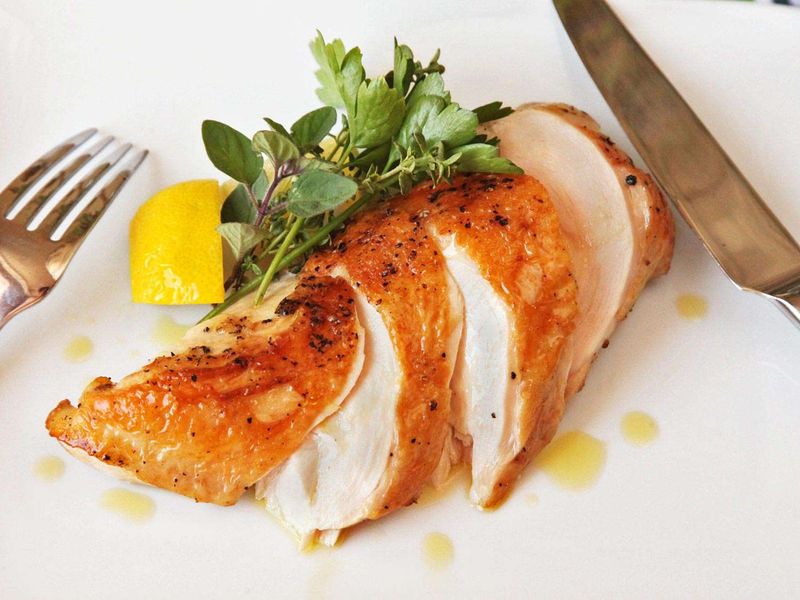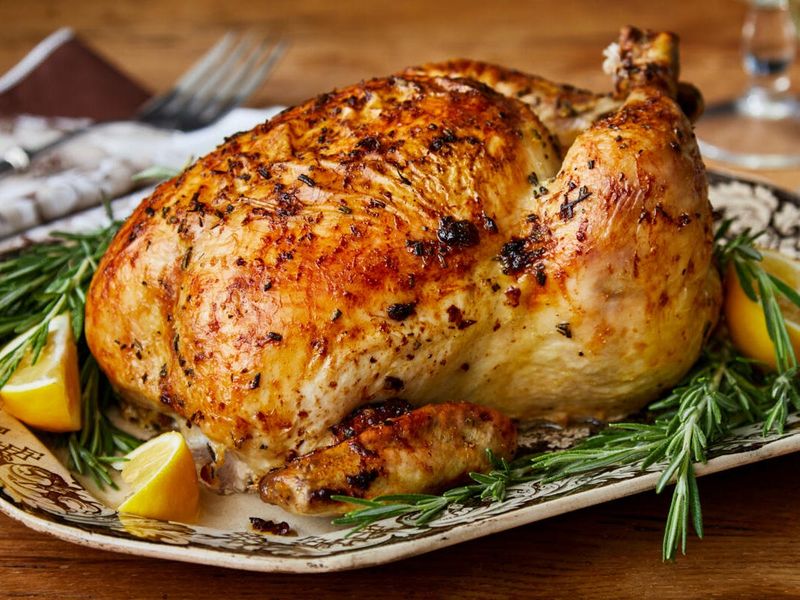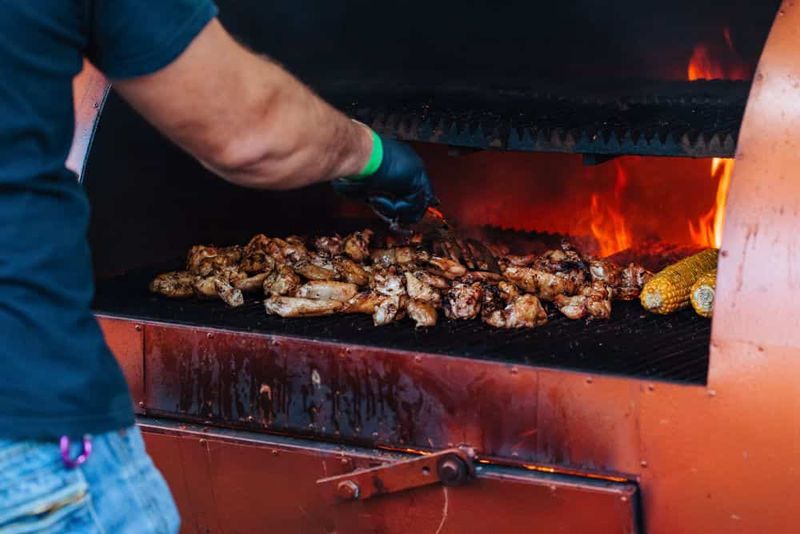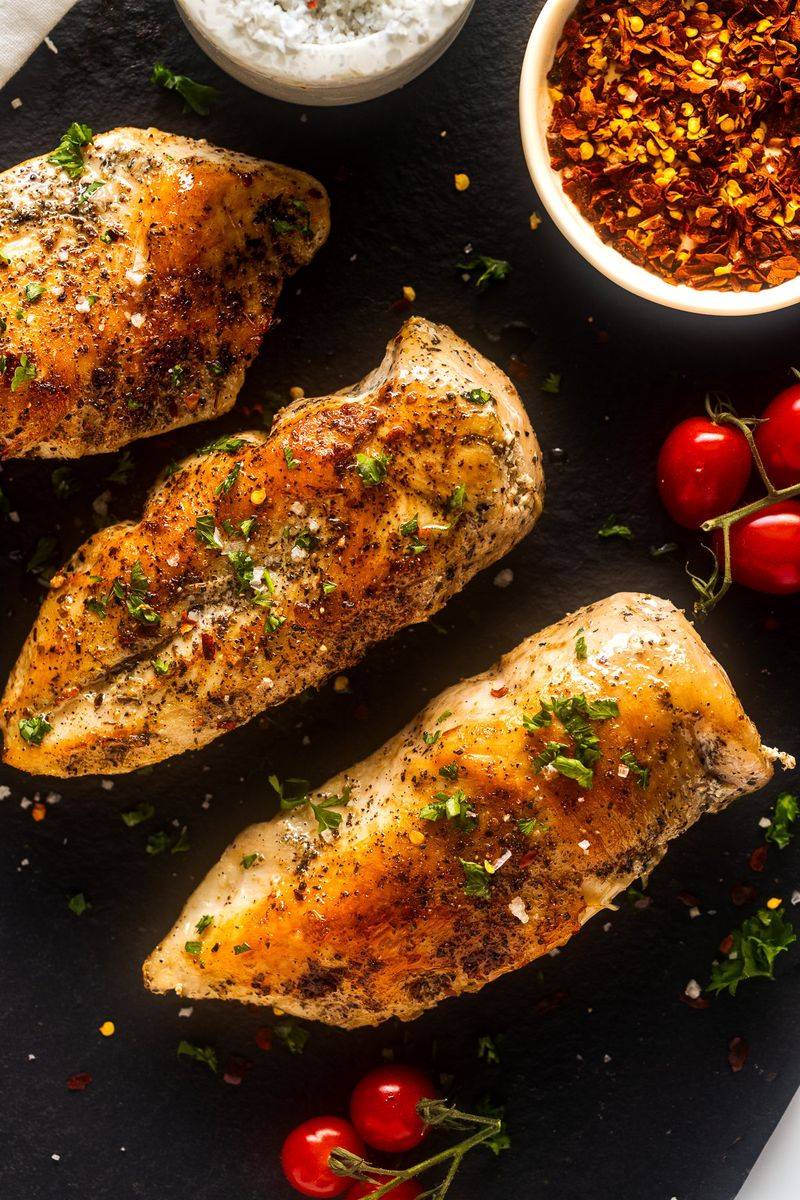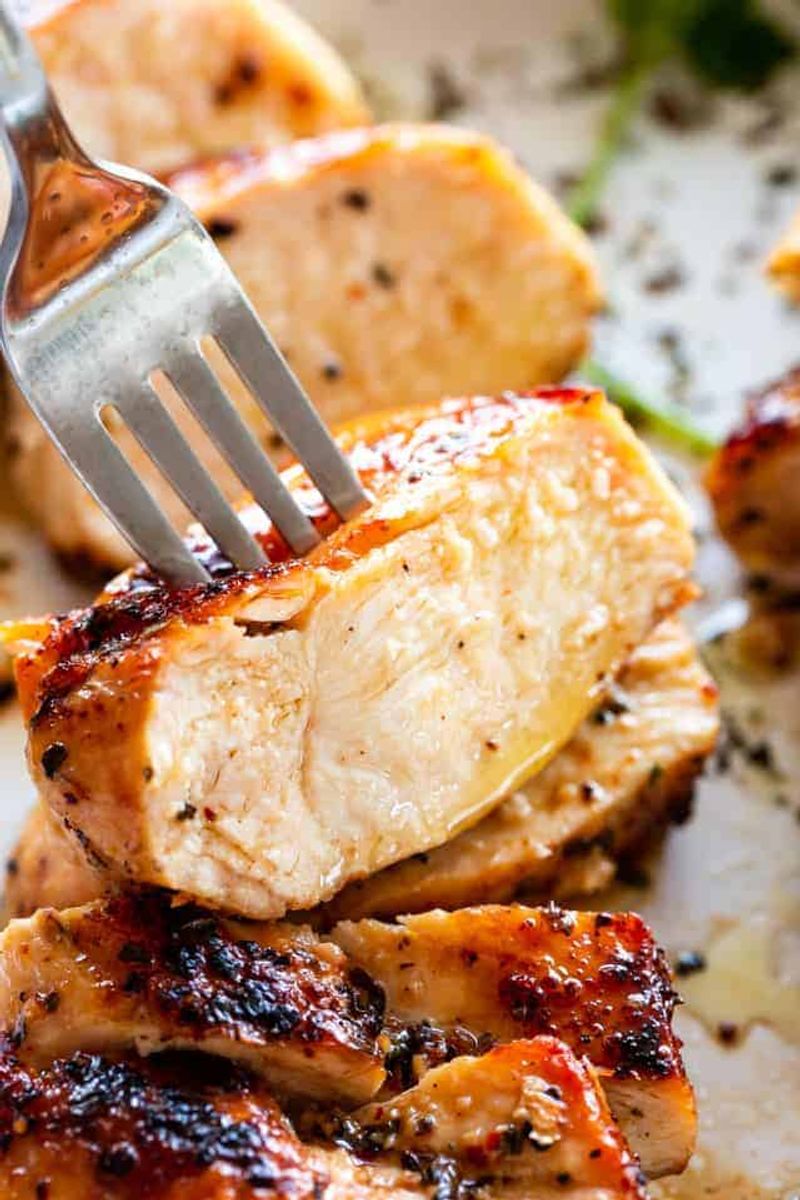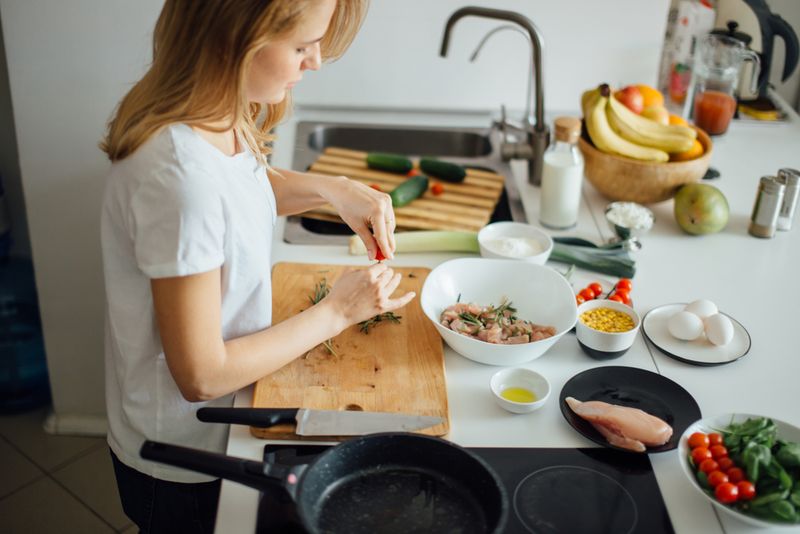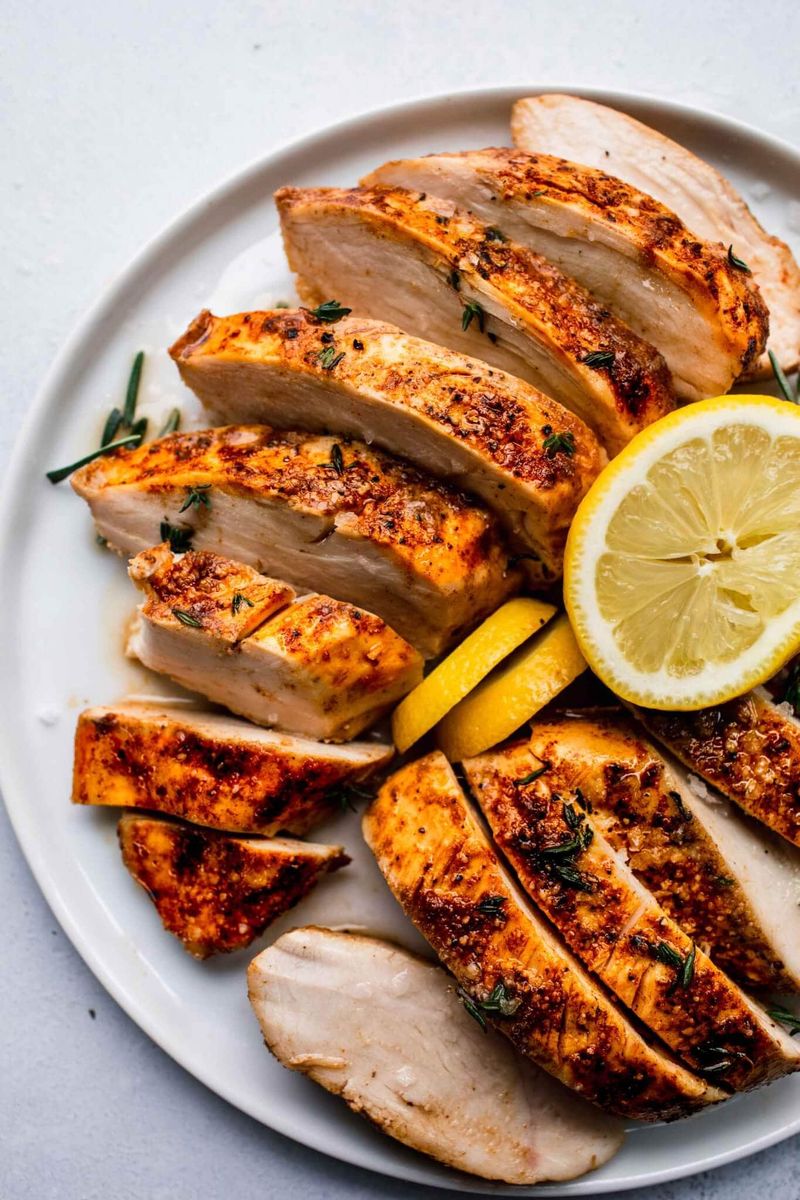Ever wonder which cooking method makes chicken taste the absolute best? We decided to find out by preparing the same chicken using three popular techniques: sous-vide, oven roasting, and grilling. Each method promises different results in flavor, texture, and juiciness, so we put them all to the test to see which one truly wins.
1. How Sous-Vide Creates Perfectly Juicy Chicken
Cooking chicken so tender it practically melts in your mouth. Sous-vide makes this happen by sealing the meat in a special bag and cooking it slowly in warm water at exactly 149°F.
The temperature stays perfectly steady for hours, which means every single bite turns out evenly cooked from edge to center. Your chicken never gets dried out because the gentle heat keeps all the natural juices locked inside.
Professional chefs love this method because it removes all the guesswork and delivers restaurant-quality results every single time you cook.
2. Why Sous-Vide Chicken Needs a Quick Sear
Here’s a surprising truth: sous-vide chicken looks pale and unappetizing straight from the bag. The low cooking temperature prevents the Maillard reaction, which creates those delicious brown, crispy bits we all crave.
That’s why most cooks finish their sous-vide chicken with a blazing-hot sear in a pan or on a grill for just one or two minutes per side. This quick step adds incredible flavor and an attractive golden crust without overcooking the inside.
Think of it as getting the best of both worlds—perfectly cooked meat with a restaurant-style finish.
3. Oven Roasting Delivers Classic Crispy Skin
Nothing beats walking into a kitchen filled with the smell of roasting chicken. Oven roasting at around 350°F creates that gorgeous golden-brown exterior everyone loves while keeping the inside moist and flavorful.
The higher heat triggers chemical reactions that develop deep, savory flavors and make the skin wonderfully crispy. Your oven does most of the work while you prepare side dishes or relax.
Just remember to check the temperature with a meat thermometer because leaving chicken in too long can dry it out quickly.
4. The Grilling Method Adds Smoky Flavor
Grilling transforms ordinary chicken into something special with its distinctive smoky taste and beautiful crosshatch marks. Direct heat from the flames cooks the outside quickly, creating a slightly charred, flavorful crust that oven-roasted chicken simply cannot match.
However, this method demands your full attention because the high temperatures can easily burn the outside while leaving the inside raw. Experienced grillers know to move chicken to cooler zones and use a thermometer to ensure proper doneness.
When done right, grilled chicken offers unbeatable flavor that screams summertime barbecue.
5. Comparing Texture Across All Three Methods
Texture tells the whole story when comparing these cooking techniques. Sous-vide chicken feels incredibly tender and almost silky because every fiber cooks at the same gentle temperature throughout the entire process.
Oven-roasted chicken offers a pleasant contrast between crispy skin and moist meat underneath, though the outer layers can sometimes turn slightly tough. Grilled chicken develops a firmer, chewier exterior with a smoky char that adds textural interest.
Your personal preference matters most—some people adore that tender sous-vide bite, while others crave the satisfying crunch from grilling or roasting.
6. Which Method Keeps Chicken Most Moist
Moisture retention separates good chicken from great chicken, and sous-vide wins this category hands down. Cooking in a sealed bag at low temperatures prevents any moisture from escaping, resulting in chicken that stays incredibly juicy even if you accidentally cook it a bit too long.
Oven roasting comes in second place, keeping chicken reasonably moist if you monitor cooking times carefully and don’t exceed safe temperatures. Grilling ranks last because direct flames quickly evaporate surface moisture and can leave chicken disappointingly dry.
Want maximum juiciness? Choose sous-vide without hesitation.
7. Time Investment for Each Cooking Technique
Patience pays off differently with each method. Sous-vide requires the longest commitment, typically one to four hours depending on thickness, but you can walk away and do other things while the machine works its magic.
Oven roasting takes about 45 minutes to an hour for whole chicken or 25 to 35 minutes for pieces, requiring occasional checks to prevent overcooking. Grilling moves fastest at just 10 to 20 minutes total, but demands constant supervision to avoid burning.
Choose your method based on whether you value convenience, speed, or hands-off cooking.
8. Our Final Verdict on the Best Method
After tasting all three versions, we discovered that no single method reigns supreme for every situation. Sous-vide combined with a quick sear produces the most consistently perfect results with unmatched tenderness and juiciness that impressed everyone who tried it.
Oven roasting offers the easiest approach for beginners and delivers reliably delicious chicken with minimal fuss. Grilling provides unbeatable smoky flavor and works wonderfully for casual outdoor gatherings.
Our recommendation? Master all three techniques and choose based on your schedule, desired flavor profile, and cooking confidence level for that particular day.
